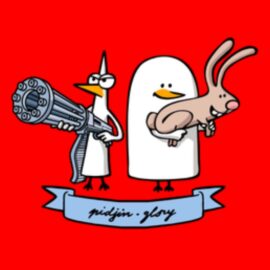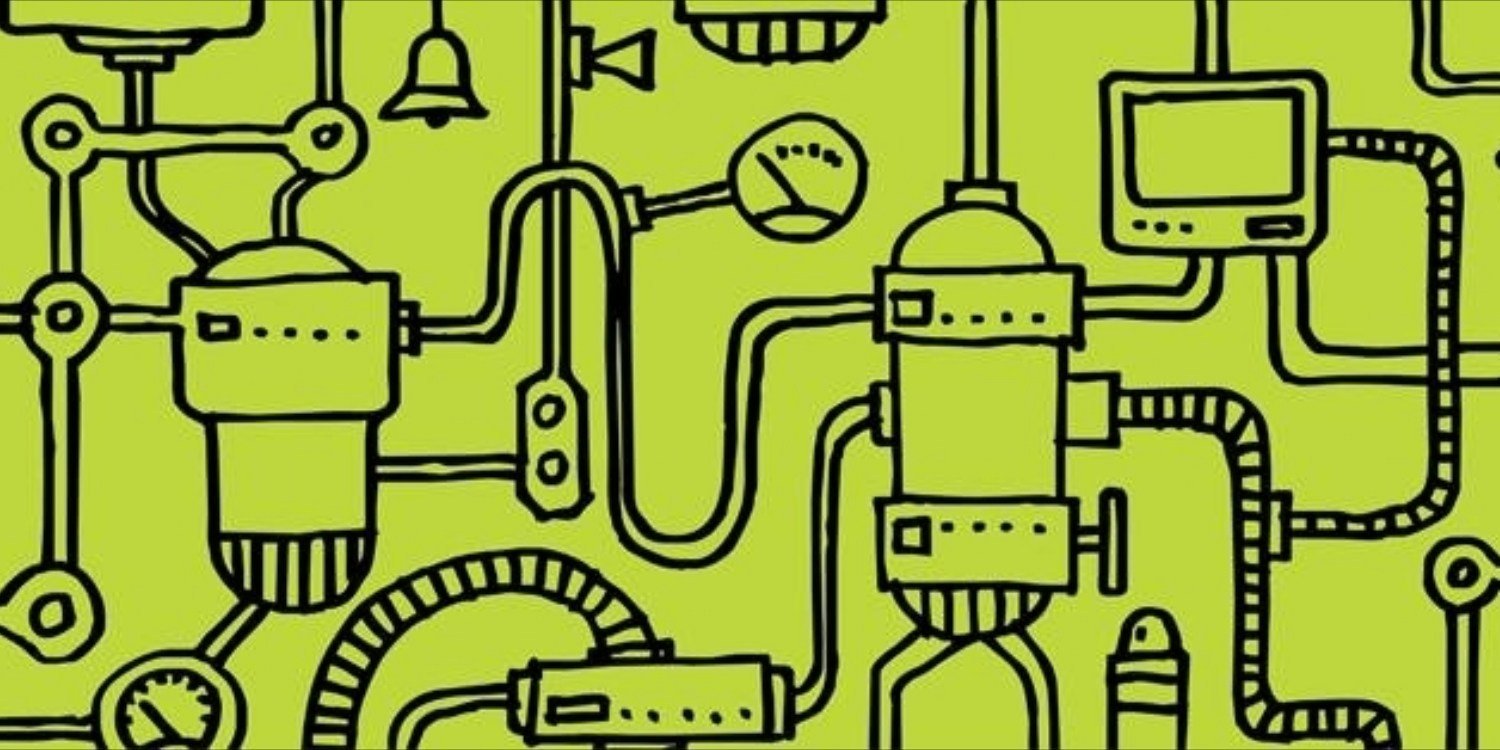
My second lesson on happiness learned at WIAD 2015 Bucharest has everything to do with digital content and how multiple personality brands fail to manage it.
Those who know me know I’m all for good content and there are few things I would not do to convince a client why content is so important and why it needs to be treated with special attention. Therefore, it would have been impossible for me not to love Raluca Bailescu and Alexandra Enachescu’s daring presentation on digital content and multiple personality brands. I used “daring” because it’s not easy to publicly denounce (and for good reasons) the way some brands mistreat their content and customers.
MakeSense team’s analysis of the Romanian brands suffering from multiple personality brands should be nothing but a great free of charge lesson and a waking-up signal for the many ignorant stakeholders.
Publishing Means Taking Responsibility
Content is both a business asset and a long-term commitment. Unfortunately, not all stakeholders realize that content cannot take care of itself and requires ongoing care, development and update. In other words, they forget or maybe they do not even realize that once you promote your content online, you become a publisher, and like any good one you need to be ready to face criticism as well as positive feedback.
Narcissistic Brands
Most probably you’ve already met them! They see themselves as perfect, untouchable, otherwise, I wouldn’t understand why they are always talking about themselves – and not about their customers, using bombastic attributes such as the best, the most, outstanding or awesome, performance, exceptional results, etc. These brands still feel they can afford to be arrogant. Well, I have got news for you, amazing brands—Sanador in particular, that time is long gone!
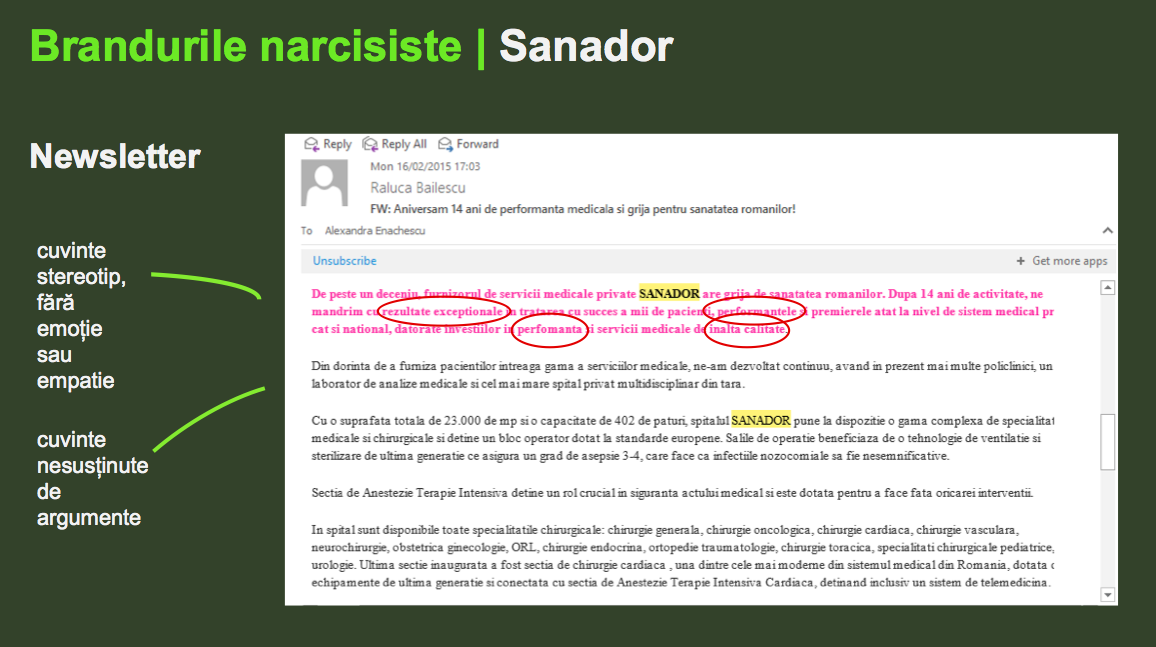
Histrionic Brands
Experts say these brands are lively, dramatic, vivacious, enthusiastic, and flirtatious. They are also associated with egocentrism, self-indulgence, continuous longing for appreciation, and persistent manipulative behaviour to achieve their own needs. Raluca brought to our attention Deichmann brand. Well, it’s true we haven’t seen traces of seductive or flirtatious behaviour, enthusiasm, quite the contrary we would say, but we did find good quality footwear for all ages, unbeatable prices, unmistakable positioning, and synergetic effects. I would only add that this is an unhappy way of expressing strong emotions with an impressionistic style and bad results.
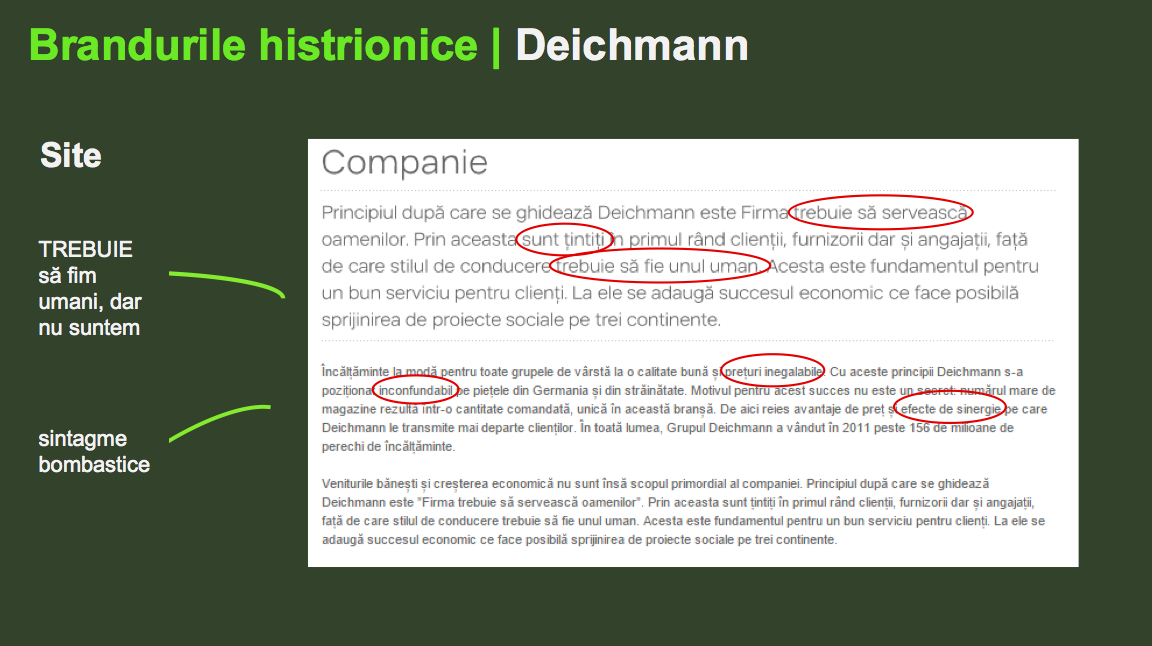
Borderline Brands
Also known as an emotionally unstable personality disorder. Brands suffering from this disorder are characterized by impulsivity, instability, and lack of consistency. These patterns occur across a variety of situations and contexts, including online channel. In this last case, what happens is that you can easily see that there’s no alignment between their digital content and the self-declared brand values. I seriously doubt that Coana Chiva—the middle age lady born and raised in the traditional Romanian village, an expert in milky topics such as cheese and yoghurt, would walk, talk and be interested in getting a sylphlike silhouette she can show off on the Mediterranean beaches.
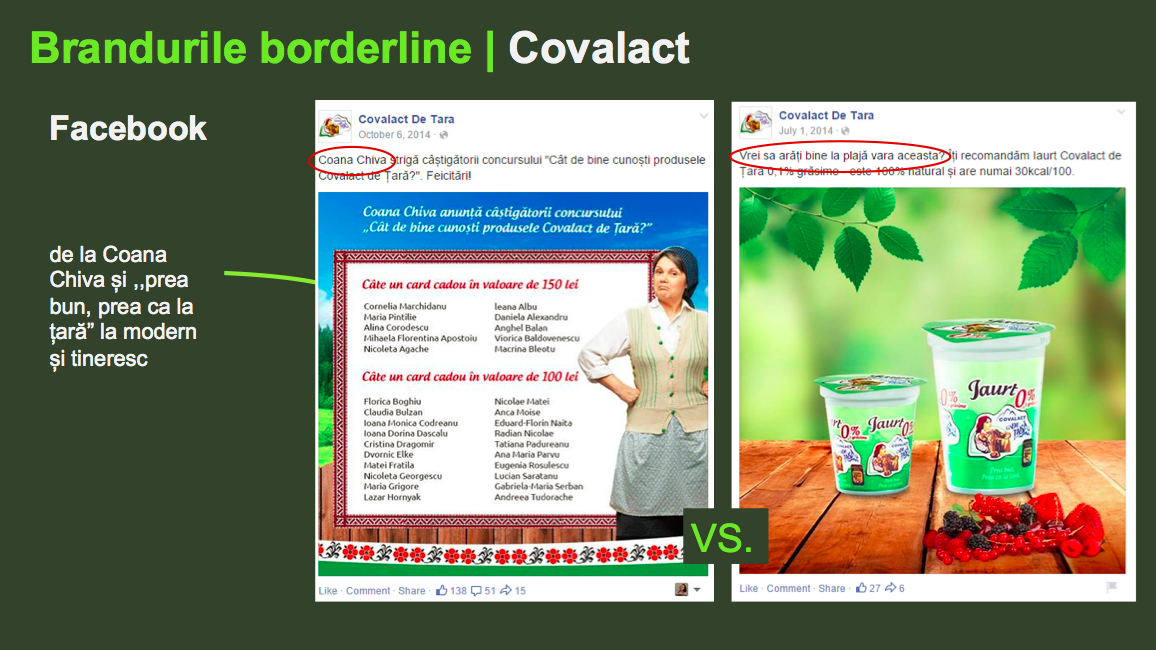
Antisocial Brands
Yes, we do have a broad brand offering, including antisocial ones. What characterizes them is a pervasive pattern of disregard for, or violation of, the rights of others. They can display impulsive or aggressive behaviour; they can easily ignore others’ opinions; basically, they do not seem to care about anything or anyone. Raluca and Alexandra’s choice was a well-known financial brand, namely Raiffeisen Bank. The examples proved that even successful brands turn a deaf ear to customers’ feedback by ignoring their complaints or show a lack of respect when using the odd RomEn (aka Romanian & English) language.
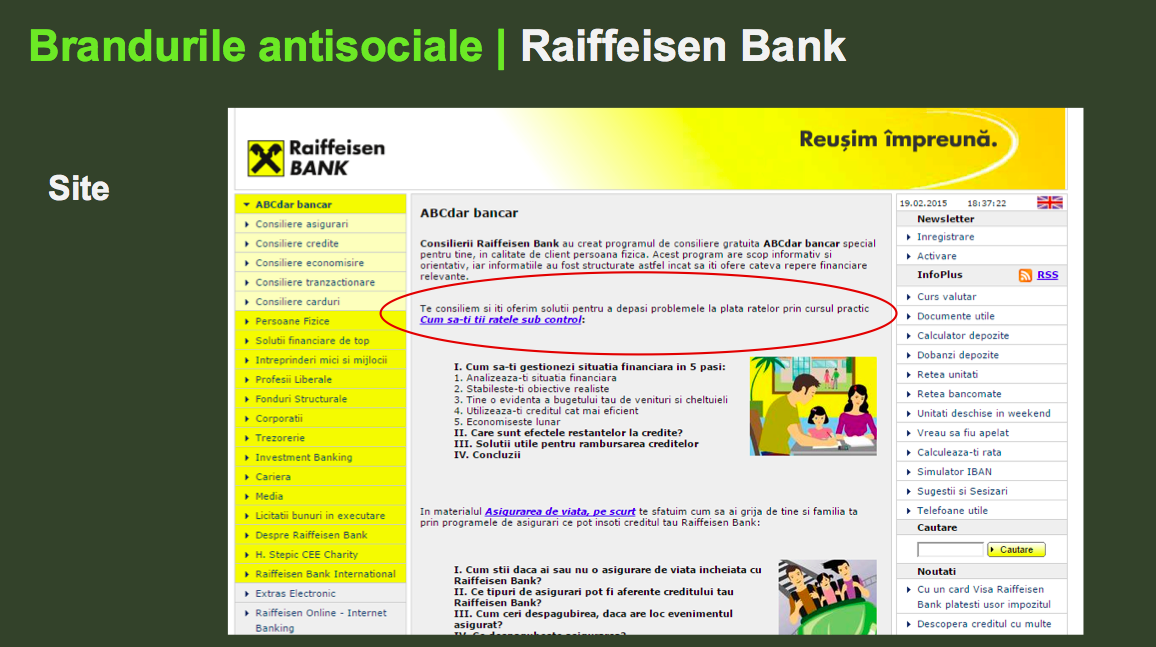
Obsessive-Compulsive Brands
The last but not least important, obsessive-compulsive brands’ own intrusive thoughts generate uneasiness, apprehension, fear or worry (obsessions), repetitive behaviours aiming to reduce anxieties (compulsions), or a combination of such obsessions and compulsions. They tend to be rigid, unapproachable, and difficult to understand. And that’s exactly what Cargus, a Romanian courier, does when using a difficult to understand language or irrelevant sentences, or by not providing all the information a user needs to know before sending a package.
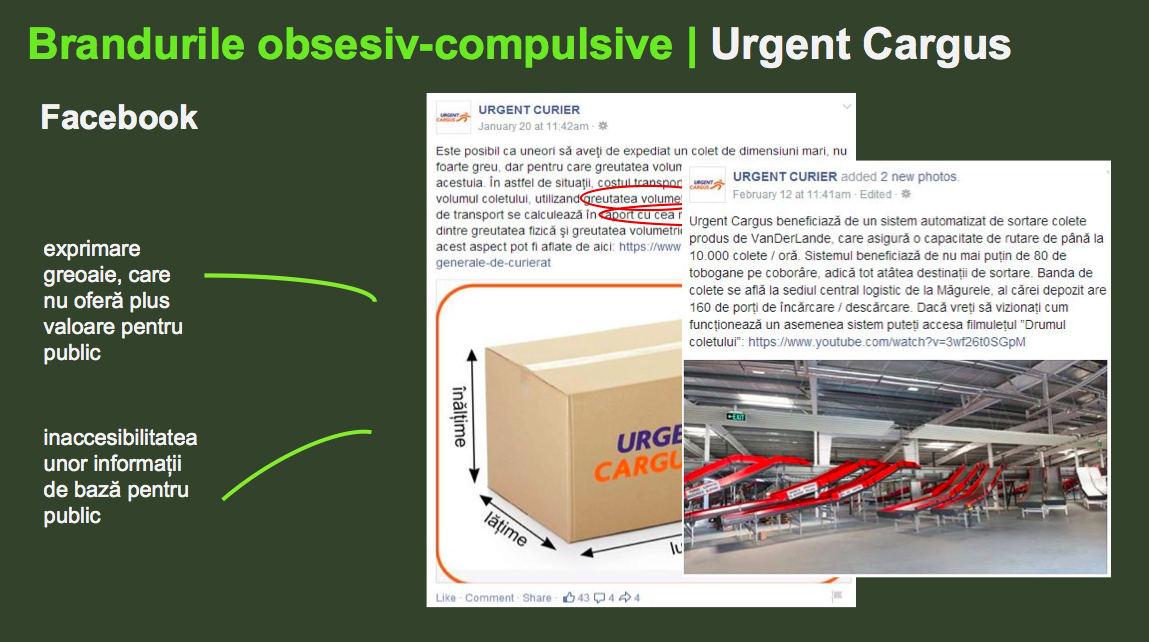
The good news for all these brands suffering from acute multiple personality disorder is that there is hope. There are many pills available, they just need to see the right doctor… it may be an agency who understands brand values, gets users and knows what it takes to be successful with social media. Or, it may be a class, a course you can send your team to learn. MakesSense and GROW are two doctors I highly recommend.
Multiple Personality Brands & Happiness
Are you still thinking about what’s so happy about this story? Here’s my answer to you. Happiness is also about being honest, fair and staying true to yourself. You do not often see agencies taking the risk of losing a potential client just because they want to speak their mind. Raluca & Alexandra, you’ve done the right thing! Chapeau!

